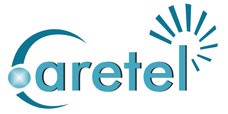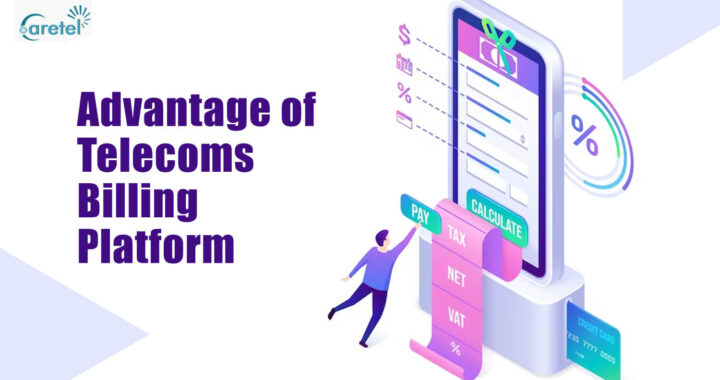Year after year, the telecom industry has grown incredibly. Although there are many advantages and disadvantages to this growth, we can easily avoid the disadvantages by using telecom billing platform. The procedure of telecom billing is complicated. Inaccurate billing of accounts and services may result in lost income. However, if we employ an automated tool, we can easily handle all the challenging tasks in less time and with no effort.
We will explain why telecom billing management software is crucial for the company in this blog post, along with the nine qualities that every telecom billing software must have.
Why Have Businesses Come to Value Telecom Billing Software So Much?
The financial services provided by the telecommunications sector revolve around telecom billing tools. All of a customer’s time consumption is preserved with the aid of these solutions. so that a client only pays for the time they use. Additionally, the software creates the bills that are delivered to the client along with thorough usage details. A corporation can better manage all of its financial resources by combining various modules into a single programme.
Reducing or eradicating repeated invoicing issues is one of the key advantages of billing solutions. We cannot argue that even little errors can result in significant financial loss for a business. Accounting mistakes can occasionally be the result of ineffective communication or conflicting data.
Process of Invoicing in telecom billing management Software: Importance
The procedure of invoicing is crucial to the telecom industry. It is a method by which the telecom firm determines the fees to be paid by its consumers. The communication service provider uses this invoice to compute the sales services. Companies utilise invoicing as a method of billing clients by transforming invoices into statements. You can get assistance with the process of entering your invoice data into the system from oss bss solutions. Additionally, a statement will be generated and sent to your customer in the expected format. You may use it to automate procedures, boost productivity, and enhance accuracy.
Most Required Telecom Billing Software has nine functions
Telco billing software enables businesses to satisfy consumer demands while achieving financial targets. To deliver outstanding service, make plans, and map out present service regions, telecommunications service providers require as much information as they can about their clients, bills, and income.
Overall, effective billing software for telecom businesses will present an opportunity for you to provide better customer service. A customer support agent can promptly and efficiently resolve any billing issues. Customers may even check into issues and billing concerns using their internet accounts.
1. Modify the software to suit the needs of the business
Each business has its own distinct billing, workflow management, subscriber acquisition, and inventory control procedures. As a result, the billing software supplier must offer tailored solutions that meet the needs of the telecom service provider.
2. Data Security
To maintain security, the Software must include features for encrypting the data. The Software must maintain the security of all relevant client information. Additionally, a feature for data backup should be included so that data loss is not a concern.
It is both your ethical and professional responsibility to employ cutting-edge technology or tools to secure the financial information of your clients. If you are unable to achieve it, you risk losing your customer’s confidence.
3. Keep your billing errors to a minimum
The billing procedure is a difficult one, and even a minute-long mistake can have a negative financial impact on the business. As a result, billing software guarantees that the final charge that customers get is free of mistakes.
4. Reliable Subscribers Management
Subscribers to telecommunications firms might also pay a monthly fee for the services they receive. The company’s employees may quickly and accurately produce their bills with the aid of billing tools.
5. Compatible with several payment gateways
All significant payment gateways must be integrated into the software for subscribers to use Netbanking and other related services to pay their bills online. With the help of this function, customers may rapidly pay their bills using their smart devices from any location.
6. Integrated with current CRM & ERP systems
To maximise the functionality of CRM & ERP and effectively complete your company duties, billing software must be connected with both systems.
7. Handling several clients and payments
Managing the data of millions of clients becomes challenging. Since there are so many customers, telecom billing software must manage their data. Along with handling the data, it also protects it from phishing attacks.
9. Detailed billing information
Subscribers to oss bss companies are constantly seeking methods to lower their communication expenses. They gain a comprehensive knowledge of their data consumption when thorough information on telecom usage is provided.
Monthly information on a subscriber’s call duration, time and date of calls, message analytics (received, sent, delivered), data expenses, etc. should be included in a thorough billing report.
Subscribers should have no trouble accessing this material through the web portal using their login information.
These are the nine essential elements a telecom billing software has to have to function properly.
To accommodate all business models with oss bss vendors
The telecom software needs to be adaptable enough to handle all of the varied business models used by different telecom companies, including post-paid, pre-paid, and hybrid models. Additionally, the software must provide convergent billing options, in which multiple services rendered by the software are combined into a single bill.
Explains Next Generation Billing as a Service
The pandemic significantly increased the demand for bandwidth in the telecom sector. The demand to stay connected increased in importance to an increase of 30% to 50%, which resulted in a rise in network utilisation. To stay up with this demand and their competitors, Communications Service Providers (CSPs) are currently rushing to modernise their basic business procedures, such as billing. To better handle a high volume of transactions, CSPs may increase efficiency throughout their operations (including billing procedures) using a flexible, secure cloud platform. Cost savings can be made as a result, but more crucially, resources can be made available to promote customer-driven innovation.

